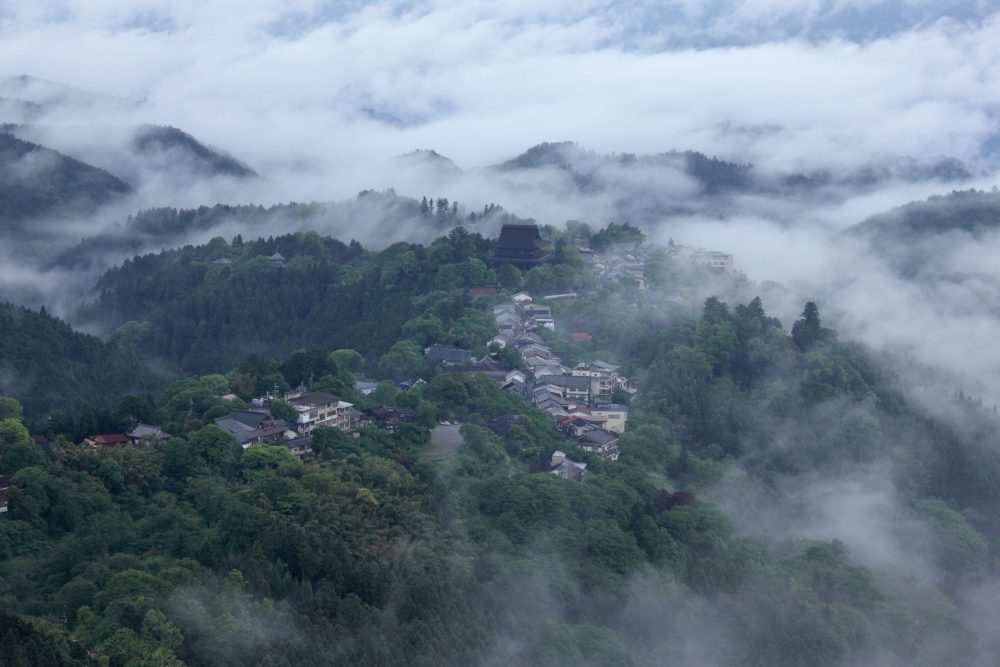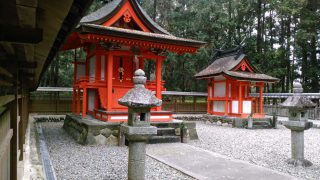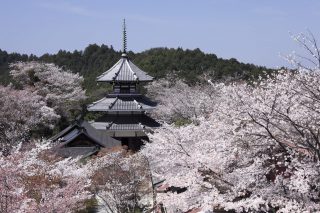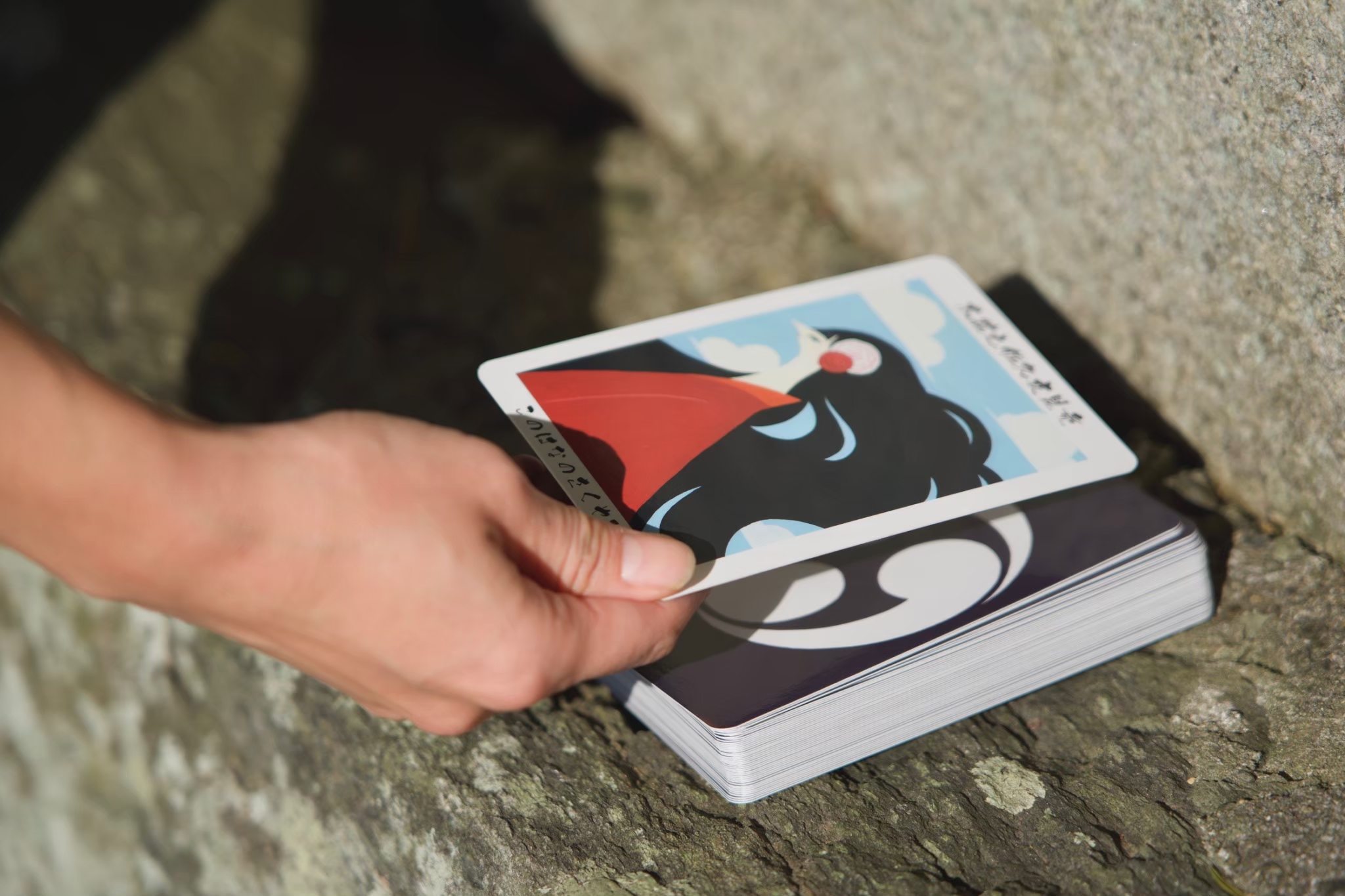A plain that continues into the distance, and a society surrounded by mountains.
I remember someone told me once that the old word for the Nara basin is “Kun’naka” and the mountains surrounding it “Aogaki.”
Living in the Nara Basin, I occasionally wondered “What world exists beyond the mountains?”
The world that spreads beyond is known as “Aogaki”.
Its meaning might refer to an entirely different world.
But can it be?
Many people living in the “Kun’naka” area of the Nara basin probably sometimes have the feeling that the area outside of “Aogaki,” in the mysterious mountainous regions, is indeed another world.
For example,
On a cold winter day, if one sees a car driving through an otherwise snowless Nara basin, people might remark “Oh, it must have come from Yoshino.”
Even living in the same prefecture, “The place where the weather is different” is always the other side of Aogaki.
In fact, the world will certainly change if you go a little further south from the Nara Basin to the mountainous region of Yoshino.
From the world of the plains to the world where the mountains seemingly march on endlessly.
Apparently, people traveling to Yoshino 1,300 years ago remarked “I may have come to the world of hermits and gods.”
Approximately 1,300 years ago, the Emperor of Japan created a countryside residence in Yoshino.
From that time on, Yoshino, beyond Aogaki, became a place about which much poetry was composed. This poetry has been preserved through the ages in a famous collection known as the “Man-yo-shu.”
The poems of this area can tell you how people of those days saw Yoshino.
Let’s take a look at some of these viewpoints:
“Moss spreads all over Mt. Aone-ga-mine in Yoshino, as if a green cloth.
Who has woven this green cloth? That there should be no warp or weft.”
I guess the answer to the question posed in this poem is “it must be the god of the mountains!”
“The Imperial villa located in Yoshino, as if the god of the mountains and river are serving close together.”
Apparently, the people at the time of “Manyoshu” felt the godliness of the mountains and rivers of Yoshino.
“There was a story of a fisherman who was catching fish in the distant past of Yoshino.
A hermit who pretended to be a tree branch was caught by a fisherman’s trap.
After that, the fisherman and hermit lived happily together…
If the fisherman hadn’t set up a trap, the branch that the hermit had pretended to be would have been swept off.
Then I guess I could have fallen in love with her.”
This poem is made based on the premise that everyone knows this old day tale of Yoshino.
Surely, many people at that time would know the story of the hermit in this poem?
I wonder, what was the hermit like?
As it is a famous tale, she had to have been beautiful.
I wonder if the author of this poem was a gentleman who fantasized about romance, dreaming about opportunities that could have been.
By the way, as many people know, “Yoshino” is now famous for cherry blossoms, but it is interesting to note that in the “Man-yo-shu,” they are never mentioned.
Before the cherry blossoms became famous, Yoshino was a world of mountains and rivers, where the gods dwelled and the hermits played.
Though the shape may have changed a little from 1,300 years ago, this image still remains in Yoshino. It is encompassed by its mysterious scenery, such as clouds rising in the valley after rain and wisps of fog wrapping around and veiling the Yoshino river.
I hope this image never changes.




